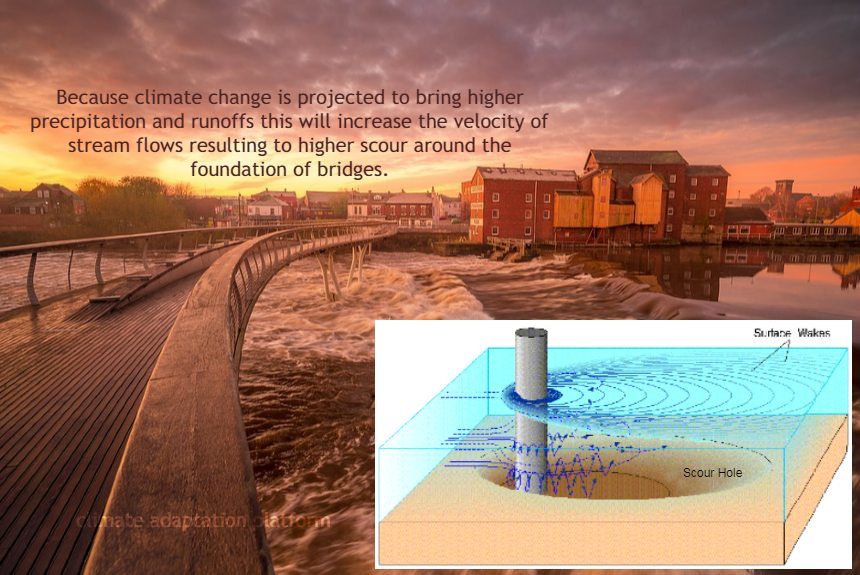Climate change has multifaceted impacts on the safety and performance of infrastructures. And bridges are particularly vulnerable according to a research article on climate impacts on bridges and its possible climate adaptation.
The study ” Bridges in a changing climate: a study of the potential impacts of climate change on bridges and their possible adaptations” presents the potential impacts of climate change to bridges and gathered almost 70 research articles to come up with possible adaptation techniques.
Some of the adaptation techniques gathered in the study can also be applied to other infrastructures as well.
The study showed how climatic events can cause disruptions and damages to infrastructure which also comes at a high cost.
For example, Storm Gudrun that hit Sweden and the Nordic regions in 2005 has damaged its transportation networks, electricity, and telecommunication and water supply infrastructures. These disruptions lasted for eight weeks and costing the region around 2 billion Euros.
The study also discusses the projected climatic changes in the different regions in the tropics, mid and high latitudes.
For example, warming in Scandinavia is projected and will result in shorter and milder winter seasons. For Southern Sweden, it will be fewer days with freezing, and more days with freezing and thawing. Future summers will become longer and hotter with longer vegetation period. Projections of climate in Europe is also discussed.
Changes in climate results in potential risks to infrastructure particularly bridges
The study enumerates these risks:
- Accelerated material degradation of construction materials due to projected higher temperatures increased precipitation, humidity, and higher carbon concentrations in the atmosphere, factors that can contribute to the faster deterioration of bridges;
- Higher flood levels and more frequent flooding, for example, a German study shows that increased flooding events could submerge some bridges;
- Damage to pavements and railways from heatwaves and increasing frequency and intensity of rainfalls. For example, heatwaves can cause lateral buckling of railroad tracks;
- The higher scour around the foundation of bridges due to fast-moving water that removes the sediments. Because climate change is projected to bring higher precipitation and runoffs this will increase the velocity of stream flows resulting to higher scour. Also, bridges built on permanently frozen ground, the runoffs from melting ice, will increase scouring risks as well;
And there are still other risks on bridges influenced by climate change.
Such as increased temperatures and solar radiation which will require higher demands on deformation capacity, bushfires events, more violent storm surges and hurricanes that can damage bridge decks, and sea-level rise. Other studies even suggested that climate change can trigger tsunamis.
Climate Adaptation techniques
After the risks were identified the study came up with the adaptation techniques which includes:
- Updating codes and standards to accommodating the changing climate;
- Restrictive land-use planning through increased insurance rates in the hazardous coastal zone;
- Development of more climate-resistant materials and technologies, among many others mentioned in the study.
The fact is that there are numerous climate adaptation measures available, and as a guide in selecting the best adaptation measure, you need to have answers to the following questions.
Is the adaptation measure or option cost-effective? Is it based on risks? And, is there a life cycle analysis for this climate adaptation option?
Access the entire research article by clicking on the bottom below:
Citation:
Amro Nasr, Erik Kjellström, Ivar Björnsson, Daniel Honfi, Oskar L. Ivanov &Jonas Johansson (2020) Bridges in a changing climate: a study of the potential impacts of climate change on bridges and their possible adaptations, Structure and Infrastructure Engineering, 16:4,738-749, DOI: 10.1080/15732479.2019.1670215. Retrieved from https://www.tandfonline.com/doi/citedby/10.1080/15732479.2019.1670215?scroll=top&needAccess=true



Leave a Reply